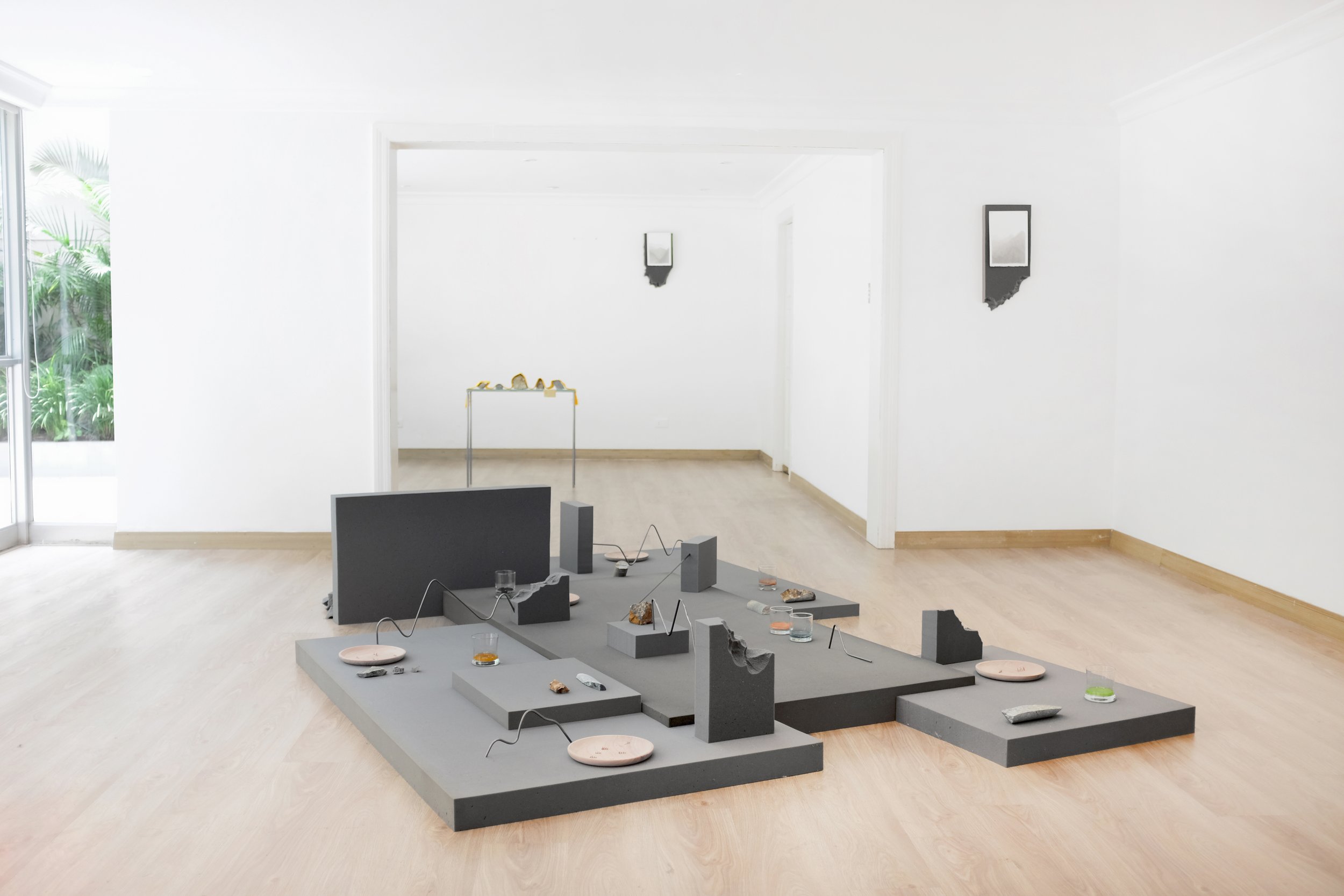


This project focuses on gold as the cornerstone of economic, armed, environmental, ethical and post-colonial conflicts. All the materials used respond to these conflicts by transforming into small object narratives, the stones with gold stolen from mines in Nariño / Colombia, the water, the dishes without food, the whiskey glasses stolen from collectors and the metallic lines of economic trading, are summed up, asked, answered or even silenced.
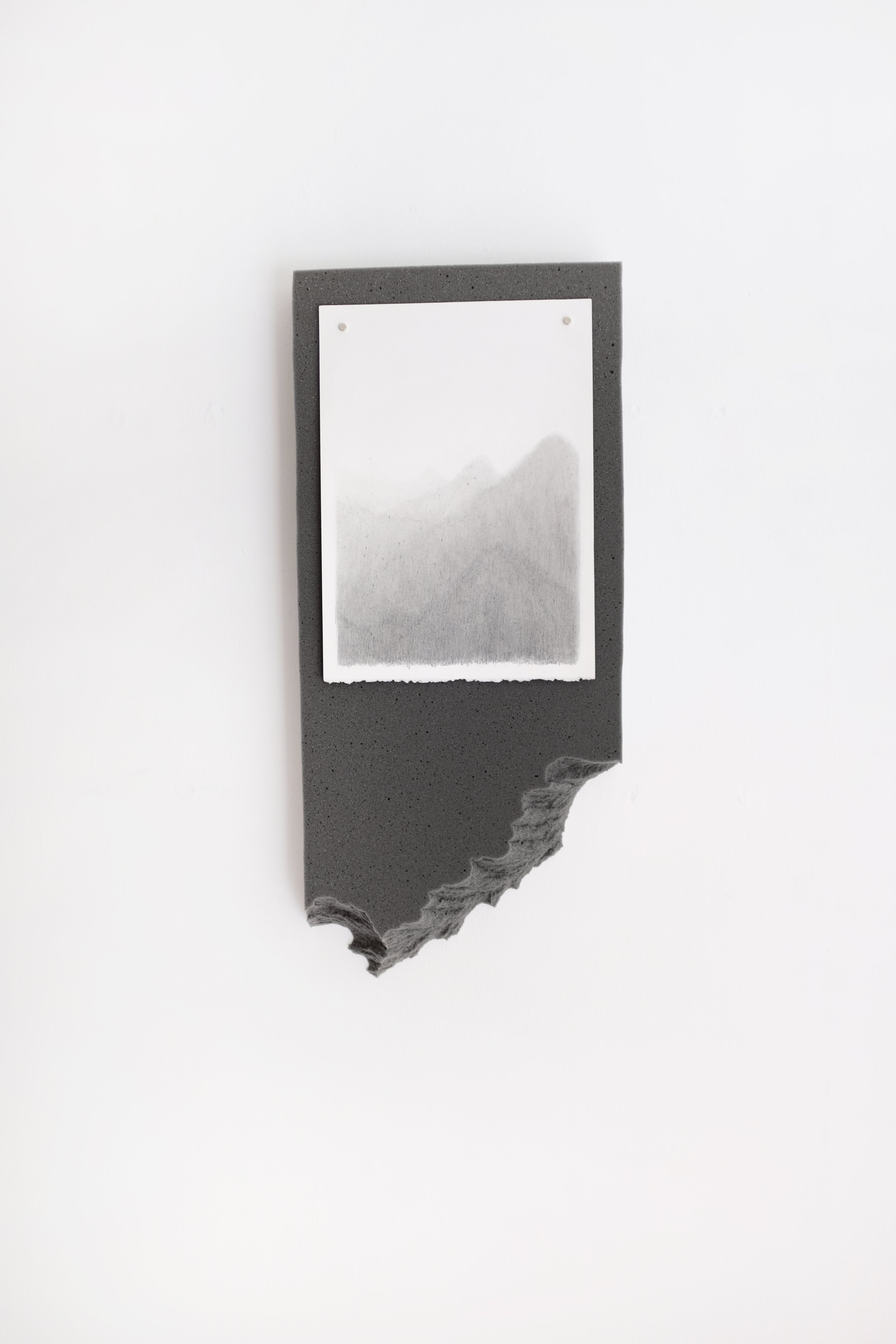
Este proyecto se enfoca en el oro como piedra angular de los conflictos económicos, armados, ambientales, éticos y poscoloniales. Todos los materiales utilizados responden a estos conflictos al transformarse en pequeños objetos narrativos, las piedras con oro robadas de las minas de Nariño/Colombia, el agua, los platos sin comida, los vasos de whisky robados a los coleccionistas, el chumbe de la comunidad indígena de pastas y las líneas metálicas que dibujan la subida y la caída del oro en la bolsa, dialogan, se suman, se preguntan, se responden o incluso se acallan.
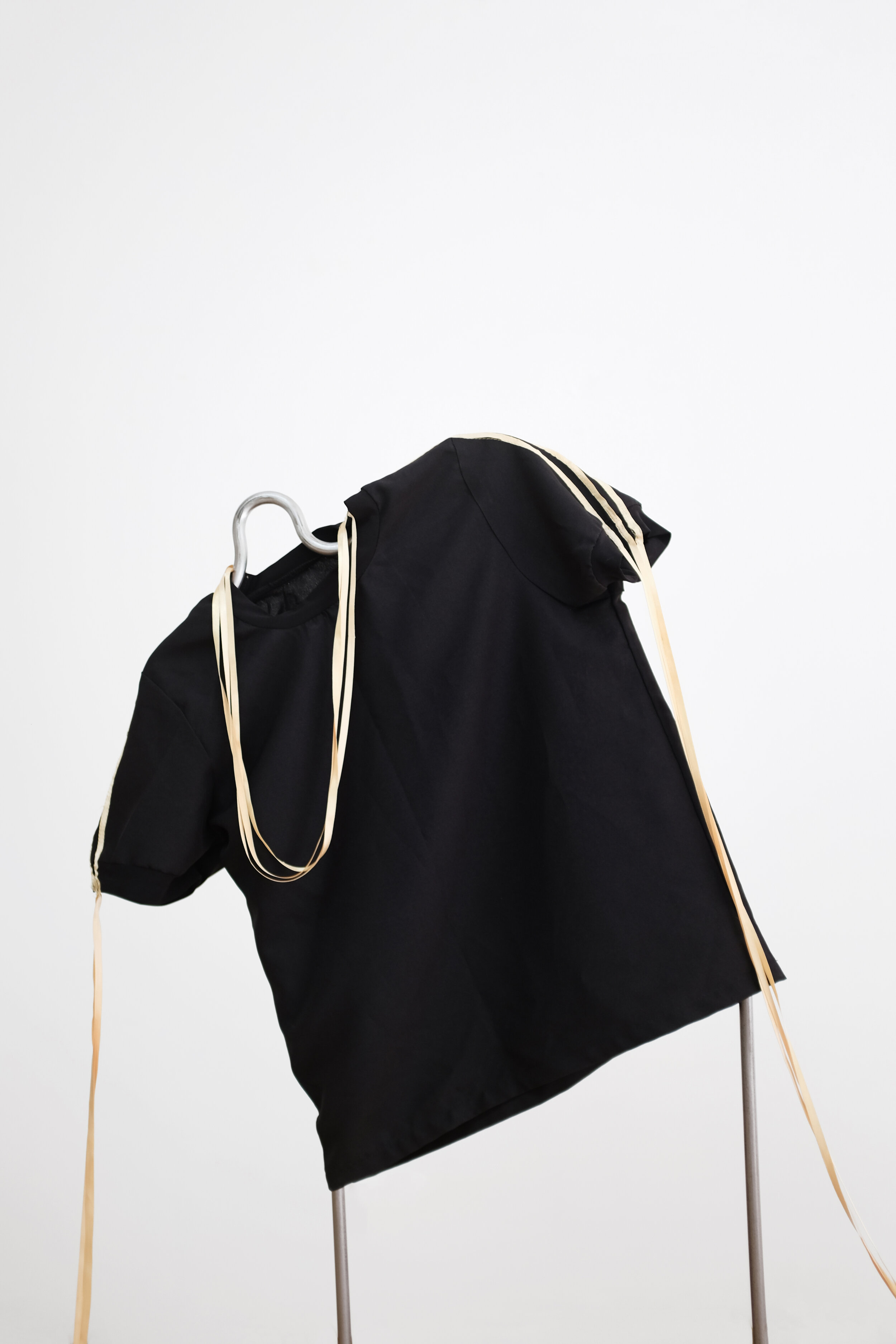
The sculptures are born from statistics on the rise and fall of gold in the stock market, which I return to form and design the coat racks. Gold as a “color” retaken by urban culture has an impact on the public, generating another type of link with this mineral historically loaded with colonial, environmental, economic problems, etc. The new values generated in the street by this "sub culture" inspired the garments with decorative ribbons in a "party gold" color.
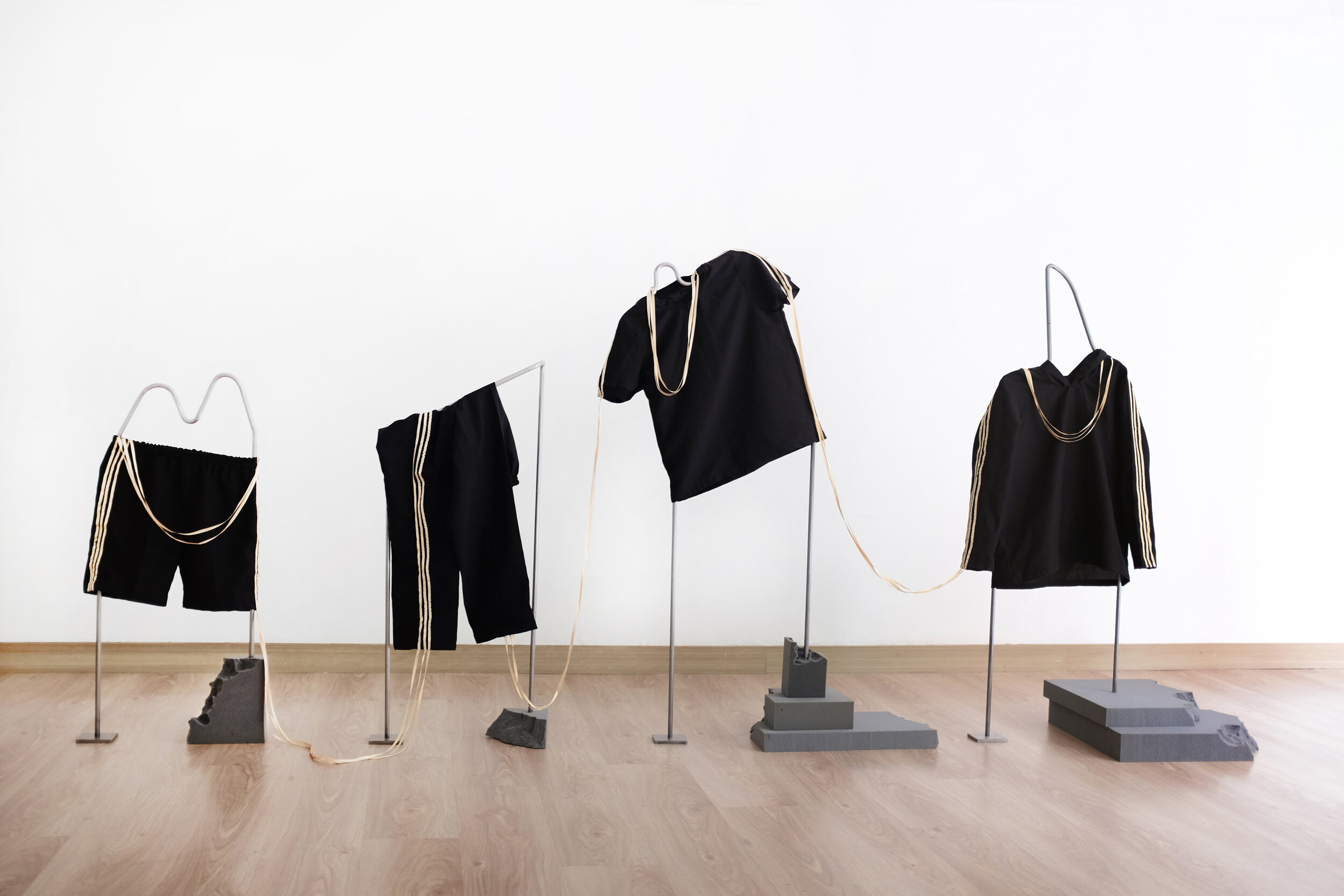
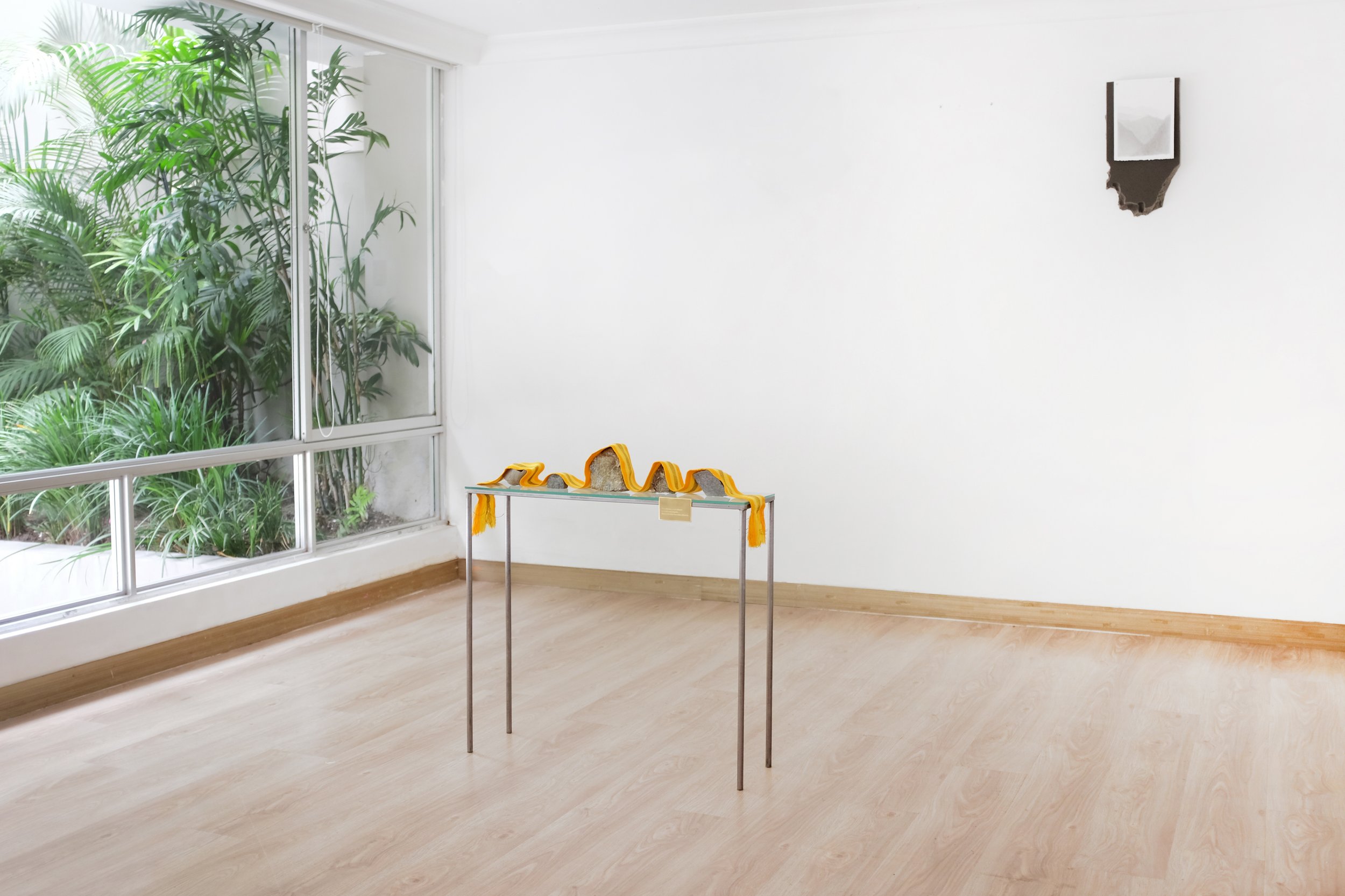
The stones stolen from various mineries in Nariño-Colombia, are transformed into a kind of topography or mountainous landscape, thanks to the "chumbe" entrusted to the community of indigenous weavers of "Pastás" in Aldana, who, like a line in space, is coupled to the shapes and heights of the stones. "Extraction of the sacred and ornamental" is an attempt to reinforce the tension of gold in the face of exploitation processes, not only mineral but also cultural and symbolic, adding existing post-colonial problems in this material.









This project focuses on gold as the cornerstone of economic, armed, environmental, ethical and post-colonial conflicts. All the materials used respond to these conflicts by transforming into small object narratives, the stones with gold stolen from mines in Nariño / Colombia, the water, the dishes without food, the whiskey glasses stolen from collectors and the metallic lines of economic trading, are summed up, asked, answered or even silenced.
Este proyecto se enfoca en el oro como piedra angular de los conflictos económicos, armados, ambientales, éticos y poscoloniales. Todos los materiales utilizados responden a estos conflictos al transformarse en pequeños objetos narrativos, las piedras con oro robadas de las minas de Nariño/Colombia, el agua, los platos sin comida, los vasos de whisky robados a los coleccionistas, el chumbe de la comunidad indígena de pastas y las líneas metálicas que dibujan la subida y la caída del oro en la bolsa, dialogan, se suman, se preguntan, se responden o incluso se acallan.
The sculptures are born from statistics on the rise and fall of gold in the stock market, which I return to form and design the coat racks. Gold as a “color” retaken by urban culture has an impact on the public, generating another type of link with this mineral historically loaded with colonial, environmental, economic problems, etc. The new values generated in the street by this "sub culture" inspired the garments with decorative ribbons in a "party gold" color.
The stones stolen from various mineries in Nariño-Colombia, are transformed into a kind of topography or mountainous landscape, thanks to the "chumbe" entrusted to the community of indigenous weavers of "Pastás" in Aldana, who, like a line in space, is coupled to the shapes and heights of the stones. "Extraction of the sacred and ornamental" is an attempt to reinforce the tension of gold in the face of exploitation processes, not only mineral but also cultural and symbolic, adding existing post-colonial problems in this material.